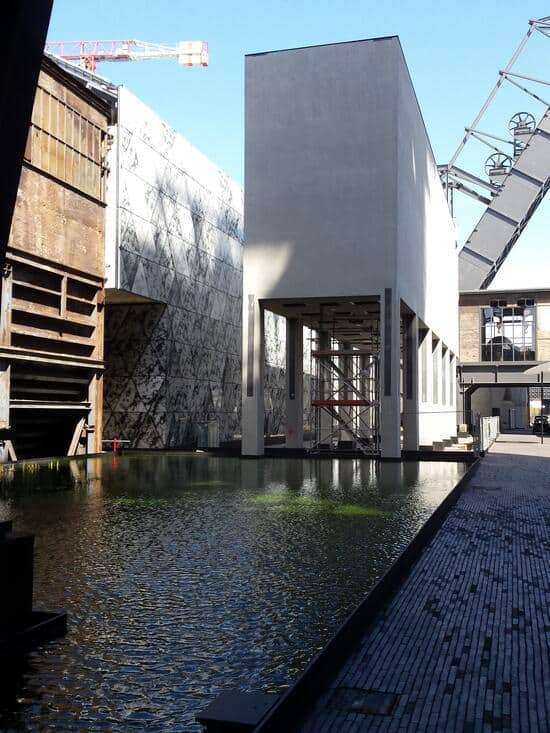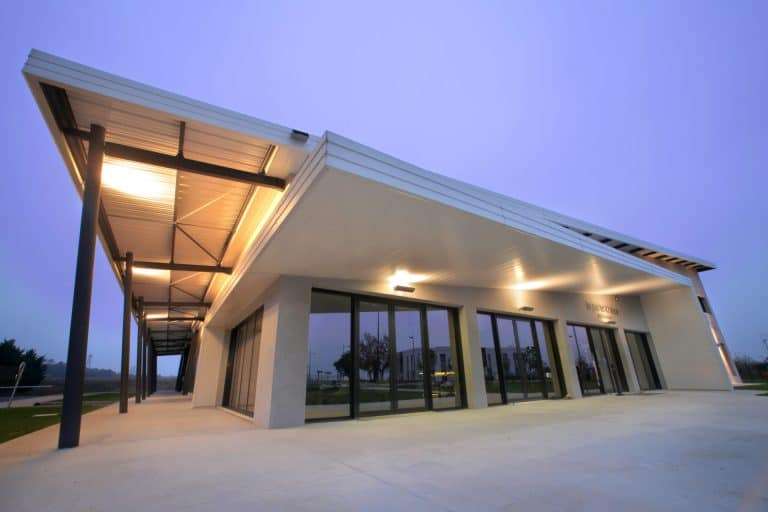The Micro Concrete Sol by Marius Aurenti
From concrete to micro concrete: what is the history and evolution that led to the creation of this name and its international recognition as a French speciality?
If the term ” micro concrete ” has become a specifically French semantic that has spread to become a generic word, it’s because the history of this concrete floor, as much appreciated as it is desired, has undergone significant evolution over the last 40 years. Marius Aurenti has been at the forefront of this history, contributing to the evolution of specific materials for micro concrete and adapting protection systems to make them suitable for everyday commercial and residential use.
Marius Aurenti, who founded the company in 1982, explains:
“The creation of the company was intended to accompany theuse of concrete in architecture and decoration. Architects and building contractors were constantly faced with the problem of protecting concrete, which they found inherently difficult to protect and clean. Architects such as Jean Nouvel, Claude Parent, Sir …, consulted us to find a way to remedy this protection. Similarly, companies such as SNCF or RATP, which put new structures into operation when lines opened, were faced with problems of dirt and graffiti, which were difficult to remedy.”
“By offering treatment solutions using anti-graffiti polyurethane protection films and concrete lasures, we succeeded in solving these problems for walls as early as the 1980s, in partnership with an English manufacturer.”

micro concrete in the 80s

The 80s were a golden era for concrete, which found its place in architecture under theimpetus of great architects such as Le Corbusier.
Concrete, an often hidden building material, is now being used facing material for walls and micro concrete for floors..
Soils at micro concrete: a specific history
At the time, concrete floors were mainly structural slabs that needed to be coated. However, there are attempts to make these pavements both structural and functional in modest buildings.
Examples of traditional concrete floors:
- Portugal: Floors tinted by adding pigments to a surface layer (Betão Alifado technique),
- Spain, Balearics, Greece: Smooth concrete floors,
- Morocco: Tadelakt and the specificity of Marrakech lime.
The origins of micro concrete date back thousands of years, even to Roman times (types of soil known as opus).
1990-2000: The rebirth of micro concrete in France
In the 1990s, the renovation of old urban factories provided an opportunity to use industrial paving as flooring in micro concrete. Marius Aurenti is playing an active part in this renaissance, proposing treatment solutions to renovate these industrial buildings and transform them into contemporary homes.
The innovation of micro concrete millimetric
In the 90s, Marius Aurenti worked on a new generation of micro concrete for floors, reducing loads and using high-strength quartz sands. Gradually, he created a micro concrete for millimetric floors, offering :
- A perfect mastery of color,
- No need for splitting,
- Varnish protection for intensive use.
This innovation took place in La Ciotat, near Marseille, and the first construction sites were built around Marseille and Aix-en-Provence. Architects push the company to its first projects, and the micro concrete coloring method is refined using pigments from the Roussillon region.

Surface preparation and protection systems
To improve the production of micro concrete for floors, Marius Aurenti is working on surface preparation systems and has defined two major product families:
- Primers for porous floors,
- Primers for sealed floors (especially for renovation over tiles).
Improvements in polyurethane varnishes have enabled us to develop a new-generation concrete protection system. Unlike wax, these varnishes offer :
- Permanent chemical protection,
- Easy maintenance.
Why micro concrete Marius Aurenti is a benchmark today
Through this evolution, Marius Aurenti has created a unique micro concrete for floors:
- Suitable for indoor and outdoor floors (terraces, walk-in showers, worktops),
- No need for joints,
- Resistant to stains and intensive use.
This innovation broke new ground in contemporary decorating, and micro concrete has since been exported to many countries, becoming a key material in architecture and interior design.

40 years of history
From its foundation in 1982 in La Ciotat to the creation of micro concrete millimetric, discover the history of Matières Marius Aurenti, its key stages and its commitment.

References
Hotels, restaurants and bars, stores and offices, cultural and public spaces, exceptional homes. Discover a list of references from the 4 corners of the world.


